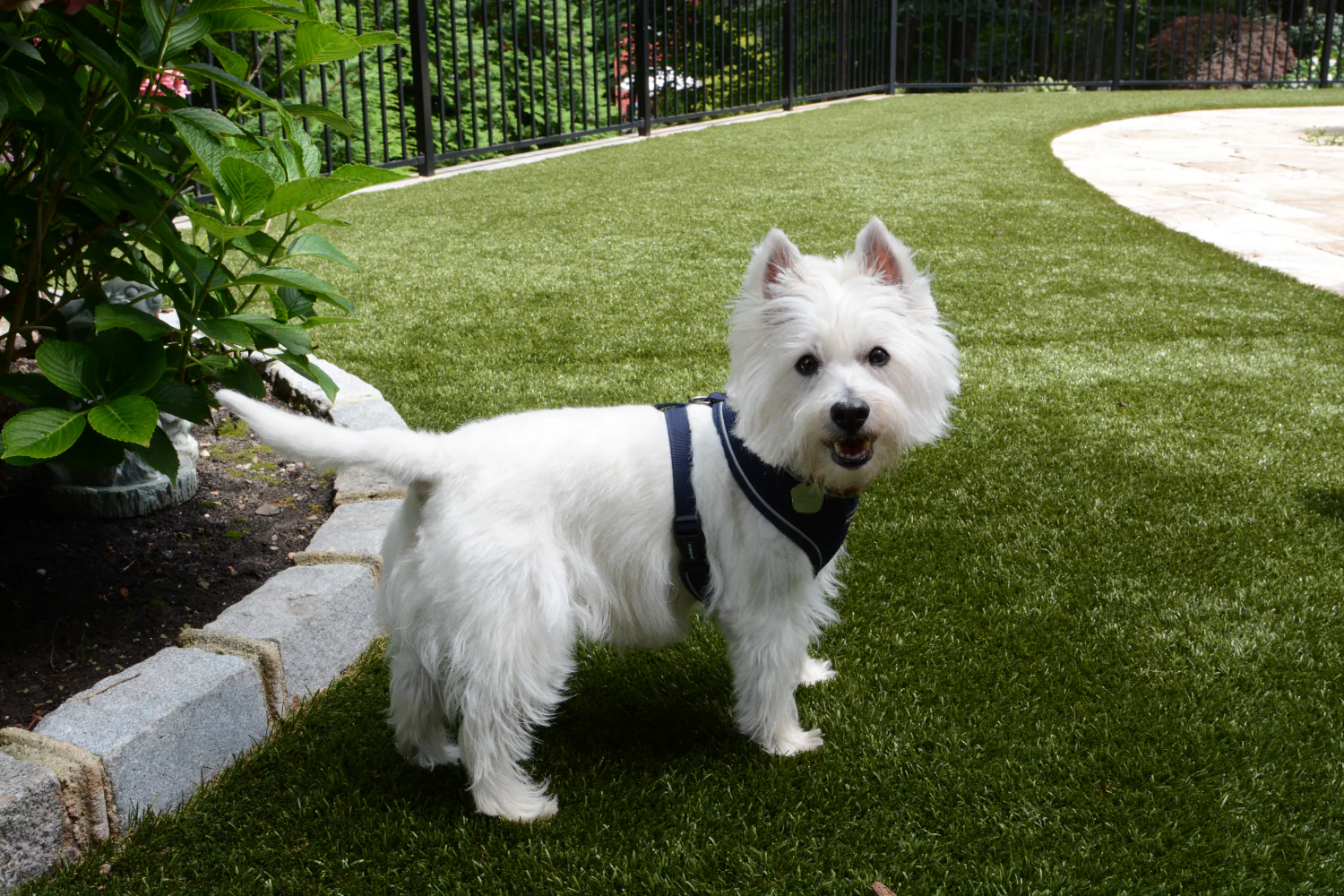How to Avoid Pet Turf Mistakes

You installed artificial grass for the easy care and tidy aesthetics — wise decision. But pets bring new challenges. Here’s a quick guide to the frequent mistakes that happen to fake grass for dogs and exactly what to do about each one, the easy way.
1. LEAVING WASTE BEHIND
What happens: A dog poop left behind dries, sticks, or seeps into the infill.
Why it matters: Old waste can harbor germs and discolor the turf.
Fast fix: Pick up and dispose as soon as you can. If residue remains, use a soft brush and a garden hose to lift it out.
Habit to build: Keep a small scoop and sealed trash bin near the yard for quick cleanups.
2. URINE BUILD-UP
What happens: Dogs favor a few spots and urine pools there.
Why it matters: Bad smells and yellowed infill may follow.
Fast fix: Flush with clean water every once in a while to prevent buildup, especially if weather is dry. For stubborn smells, a pet enzyme cleaner made for artificial turf might be necessary when using standard sand infill. Using specialized SWG/Shaw K9 infill eliminates all dog urine or ammonia smells.
Preventive move: Rotate play zones or place treats to spread traffic around.
3. DIGGING, CHEWING, AND NAIL DAMAGE
What happens: Dogs paw at the ground, chew edges, or their nails get snagged on seams.
Why it matters: Tears, loose edges, and damaged fibers wear it out early and become a tripping hazard.
Fix: Keep claws short and fix raised seams with landscaping stakes or approved bonding adhesive.
Prevention: Give dogs a dedicated digging spot and provide dog bones.
4. WATER DRAINAGE ISSUES
What happens: Water gathers after storms or heavy use.
Why it matters: Standing water areas cause mildew and create wet play zones.
Fast fix: Clean out debris from drains. Lightly lift turf edges near drains to check for blockages.
When to call a pro: If the same spot keeps flooding, the ground may require adjustment.
5. FLATTENED TURF FIBERS
What happens: High-traffic play zones start to look worn and crushed.
Why it matters: Compacted infill keeps dirt in and reduces cushioning.
Fast fix: Rake fibers upright with a soft-bristle broom.
Routine: Brush heavily used turf once a month to keep blades upright.
6. USING THE WRONG CLEANING PRODUCTS
What happens: Strong chemicals break down the backing and fibers.
Why it matters: Faded turf, damaged seams, and reduced turf life.
Fast fix: Flush with water thoroughly and choose pet and turf friendly products. A vinegar-water mix works for many scent troubles.
Note: Avoid solvent-based products and stiff brushes.
QUICK CARE CHECKLIST
- Remove droppings within a few hours
- Wash pee areas at least once a week
- Brush high-use turf areas monthly
- Give chews on a mat
- Choose pet-safe products for synthetic turf
- Inspect drainage after heavy storms
NEED A DEEP PROFESSIONAL CLEANING
Simple routines keep your artificial turf for dogs clean, smelling fresh, and appearing well-kept. If you prefer assistance — from a deep clean to checking drainage or topping up infill — Southwest Greens can step in and handle the heavy lifting so your turf stays pet-friendly and guest-ready. Reach out, and we’ll create a care plan for your turf.
